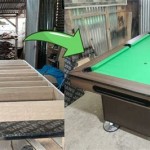Essential Aspects of Best Vegetable Garden Layout
Creating a well-designed vegetable garden is crucial for optimizing plant growth, maximizing yield, and ensuring a successful harvest. Here are some essential aspects to consider for the best vegetable garden layout.
### Planning and ZoningStart by determining the available space and sun exposure. Divide the garden into zones based on plant requirements, such as sunlight, soil conditions, and water needs. Group similar plants together to facilitate watering and maintenance.
### Crop Rotation and Companion PlantingAvoid planting the same crop in the same location year after year to prevent soil depletion. Practice crop rotation by alternating families of plants (e.g., legumes, nightshades, brassicas) to maintain soil health. Companion planting involves placing mutually beneficial plants together, such as nitrogen-fixing legumes alongside heavy feeders.
### Vertical GardeningMaximize space by utilizing vertical gardening techniques. Trellises, cages, and stakes support climbing plants like beans, cucumbers, and tomatoes, reducing ground space and improving air circulation.
### Raised BedsElevated raised beds improve drainage, extend the growing season, and provide better soil conditions. They are ideal for areas with poor soil quality or limited sunlight.
### Efficient Planting PatternsPlan the arrangement of plants to optimize sunlight and space utilization. Intercropping involves planting shorter plants between taller ones to make use of vertical space. Staggered planting extends the harvest period by planting crops in succession.
### Companion PlantsIncorporate companion plants that benefit each other. For example, basil repels insects from tomatoes, while marigolds attract pollinators and deter pests. These plants create a more balanced ecosystem in the garden.
### Water ManagementConsider the water requirements of different plants and plan for efficient irrigation. Drip irrigation or soaker hoses are effective methods that conserve water and reduce disease.
### MulchingSpread organic mulch around plants to suppress weeds, retain moisture, and regulate soil temperature. Mulch also adds nutrients to the soil as it decomposes.
### Accessibility and ErgonomicsEnsure easy access to all parts of the garden for maintenance and harvesting. Wide paths allow for comfortable movement, while raised beds reduce bending and stooping.
### Aesthetic ConsiderationsIn addition to functionality, consider the aesthetic appeal of the garden layout. Arrange plants with varying heights, colors, and textures to create a visually pleasing space that complements the surrounding landscape.
By implementing these essential aspects, you can create a well-organized and productive vegetable garden that maximizes space, promotes plant health, and provides a bountiful harvest.
19 Vegetable Garden Plans Layout Ideas That Will Inspire You Small Gardens Planner

Vegetable Gardening For Beginners The Basics Of Planting Growing Old Farmer S Almanac

Planning Your Vegetable Garden Mapping The Beds

The Top 4 Vegetable Garden Layout Ideas Westwood Gardens

Vegetable Garden Layout 7 Best Design Secrets A Piece Of Rainbow

Vegetable Garden Layout 7 Best Design Secrets Trädgårdsplanering Trädgårdslayout Trädgårdsprojekt

7 Vegetable Garden Layout Ideas To Grow More Food In Less Space

Vegetable Garden Layout Planning Bonnie Plants

How To Design The Perfect Vegetable Garden Layout Plant

20 Best Vegetable Garden Layout Ideas Planning Plot








